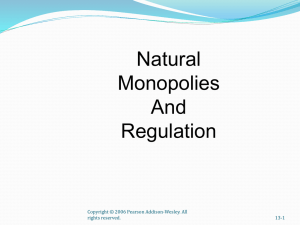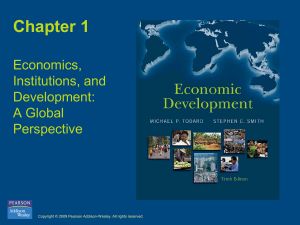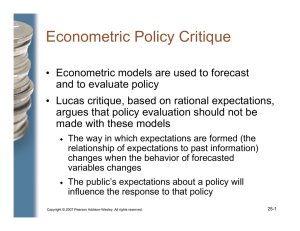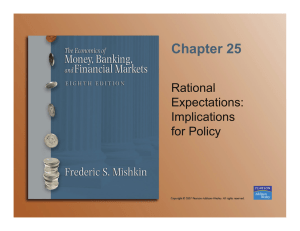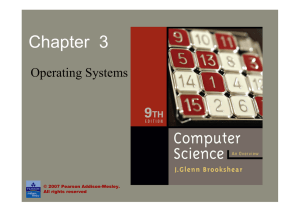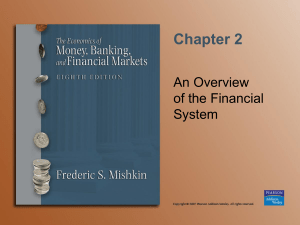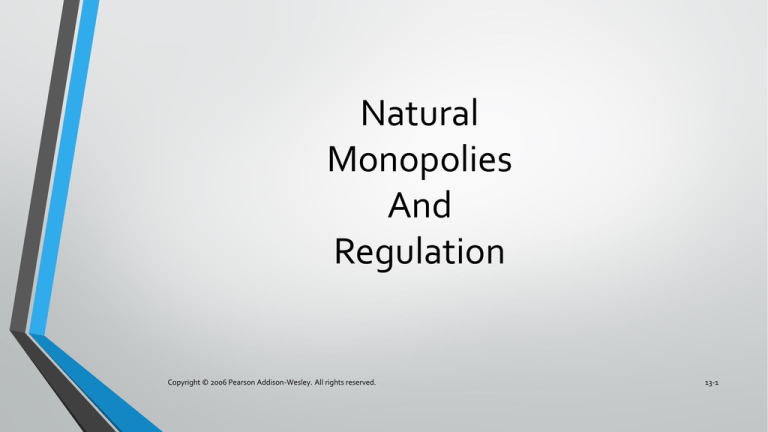
Natural
Monopolies
And
Regulation
Copyright © 2006 Pearson Addison-Wesley. All rights reserved.
13-1
Natural Monopolies
• Economies of Scale continue to occur at so large a scale that is it is
“productively efficient” (least cost) to have only 1 provider
•
•
•
Natural state and optimal state is a monopoly
typically high fixed costs and low variable costs
electric, natural gas, water, telecommunications (land) and tv cable
Copyright © 2006 Pearson Addison-Wesley. All rights reserved.
13-2
Regulation
• If a natural monopoly arises due to scale economies, the government may
prefer to regulate the monopoly.
•
Breaking the firm up may reduce efficiency
Copyright © 2006 Pearson Addison-Wesley. All rights reserved.
13-3
Figure 13.2 Natural Monopoly in the Telecommunications
Industry
Copyright © 2006 Pearson Addison-Wesley. All rights reserved.
13-4
Government Regulation of
Price and Output
• The government cannot require that a natural monopolist set price
equal to marginal cost.
•
Because marginal cost is less than average
cost, two options:
1. Government subsidizes the loss (Euro approach)
•
•
No deadweight loss, but requires taxes on other goods
2. Average Cost Pricing (or Rate of Return (ROR)): government sets price equal to average total
cost. (US solution)
• Leads to some deadweight loss, but less than a monopoly
Copyright © 2006 Pearson Addison-Wesley. All rights reserved.
13-5
Figure 13.3 Choosing a Price for a Natural Monopolist
US
French
Economic Loss or
Subsidy
Copyright © 2006 Pearson Addison-Wesley. All rights reserved.
13-6
Government Regulation of Price
and Output
• Two methods of regulating price and output:
•
Rate of Return Regulation—the firm is allowed to earn a prespecified amount of profit in a given time period.
•
Set prices to recover average cost + normal rate of return
• How do you determine normal ROR?
• Incentive for regulated firm to “pad” its costs (Averech-Johnson effect)
•
Price Cap—government sets the maximum price or the maximum
rate of price increase.
• After rate setting process: future rates can be raised by rate of inflation –
Copyright © 2006 Pearson Addison-Wesley. All rights reserved.
industry’s average productivity (incentive for tech. iinnov.)
13-7






